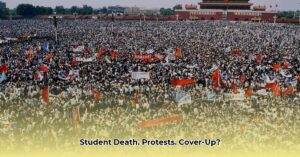Shelter or Sweep? 130+ Homeless Moved to Warehouse Amid Scrutiny
Just weeks before the 2025 Super Bowl and Mardi Gras brought thousands of tourists to New Orleans, over 130 homeless individuals were relocated from city encampments to a massive warehouse in Gentilly. This move, orchestrated by Governor Jeff Landry, has ignited controversy, with critics questioning whether it was a genuine act of compassion or a cosmetic effort to clear the streets before the city took center stage.
Background: Homelessness in New Orleans
New Orleans has long struggled with homelessness, a complex issue exacerbated by poverty, lack of affordable housing, and limited access to mental health and addiction services. Prior to the relocation, the city had established programs aimed at addressing the problem, including the “Home for Good” initiative, which focused on providing permanent housing solutions. However, these efforts have been hampered by funding limitations and systemic challenges.
The Relocation: A Warehouse Becomes a Temporary Home
The 70,000-square-foot warehouse, located at 5601 France Road, became a temporary shelter on January 15, 2025. In a swift operation, over 130 people were transported from various encampments. The state claimed the consolidated location would facilitate access to services such as medical care, mental health counseling, job training, and housing assistance. They also offered bus tickets to those with support systems in other states, suggesting an intent to reconnect individuals with family or friends.
Inside the Warehouse: Allegations of Inadequate Conditions
Despite the state’s assurances, reports quickly emerged alleging inadequate conditions within the shelter. Councilmember Lesli Harris described the warehouse as “extremely cold,” while residents Chris Aylwen and Herbert Jones corroborated these claims, citing broken plumbing and difficulty retrieving personal belongings. Some individuals who initially agreed to the relocation reportedly left shortly after, opting for the familiarity of the streets over the uncertain conditions inside the warehouse. These accounts suggest the possibility that the shelter was hastily prepared, lacking the necessary infrastructure and support services.
Conflicting Narratives: Humanitarian Aid or Public Relations Ploy?
State officials maintain the relocation was a humanitarian effort, emphasizing the involvement of Stacy Horn Koch, a former director of Covenant House, in the shelter’s operation. However, critics argue the timing of the relocation, so close to major events, suggests a prioritization of appearances over addressing the root causes of homelessness. They point to past instances of encampment clearings before high-profile events as a pattern of prioritizing optics over genuine solutions.
The Financial Picture: Millions Spent on a Temporary Fix
The shelter’s operation carries a substantial price tag. The state allocated $11.4 million to The Workforce Group, a subsidiary of Lemoine Co., for a 60-day contract, with a possible extension for an additional $4.6 million. This expenditure contrasts sharply with the city’s request for $8 million to fund its “Home for Good” permanent housing program, a request that was denied by the state. This discrepancy in funding priorities has fueled criticism that the state favors short-term, cosmetic solutions over long-term investments in proven strategies. Furthermore, The Workforce Group’s political contributions to the Republican Party of Louisiana have raised questions about potential favoritism in the contract awarding process.
Clashing Approaches: City and State at Odds
The state’s actions appear to clash with the city’s existing efforts to address homelessness. New Orleans officials have prioritized permanent housing initiatives, while the state’s focus on temporary shelter creates a disconnect in strategies. This lack of coordination raises concerns about efficiency and whether the affected individuals are receiving the most effective support. It suggests a lack of communication and collaboration that may be hindering progress on this critical issue.
Human Impact: Disruption and Uncertainty
Amid the political and financial debates, the human impact of the relocation cannot be overlooked. Over 130 individuals were abruptly removed from their communities, their routines disrupted, and their futures uncertain. Their experiences within the shelter, their access to resources, and their hopes for the future must be considered to truly evaluate the initiative’s effectiveness and humaneness.
Future Implications: A Long Road Ahead
As New Orleans moves beyond the Super Bowl and Mardi Gras, the long-term fate of those relocated remains unclear. Will the temporary shelter serve as a stepping stone to stable housing, or will it simply be a temporary fix? The controversy surrounding this initiative highlights the complexities of addressing homelessness and raises questions about the best path forward. It underscores the need for transparent decision-making, collaborative planning, and a focus on sustainable solutions that prioritize the long-term well-being of those experiencing homelessness.
What You Can Do
Several local organizations in New Orleans are working to address homelessness. [Link to local organization 1] and [Link to local organization 2] provide various services, from emergency shelter and food to job training and permanent housing assistance. You can support their efforts through donations or volunteering. For further information on homelessness in New Orleans and how you can get involved, visit [Link to relevant resource].







